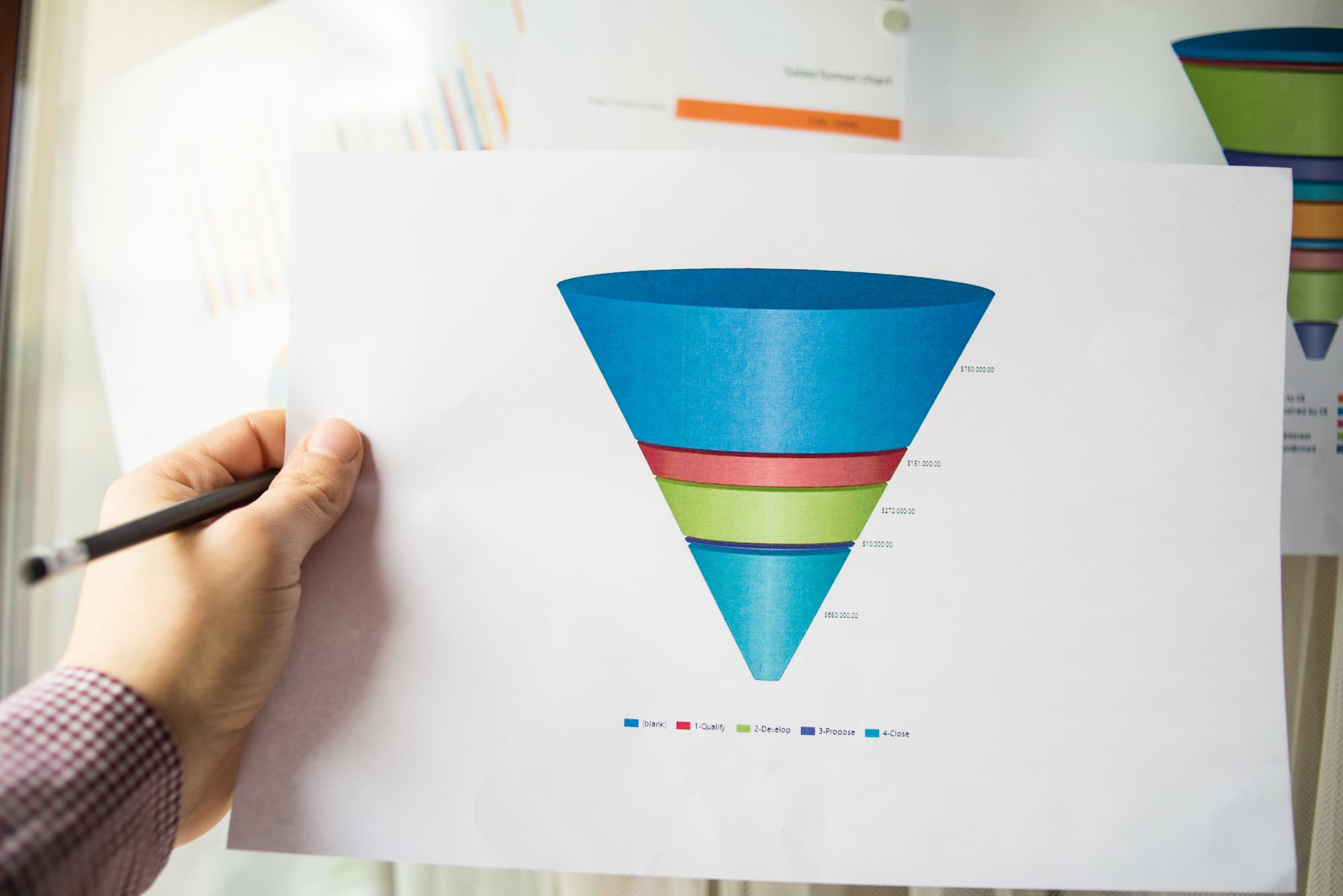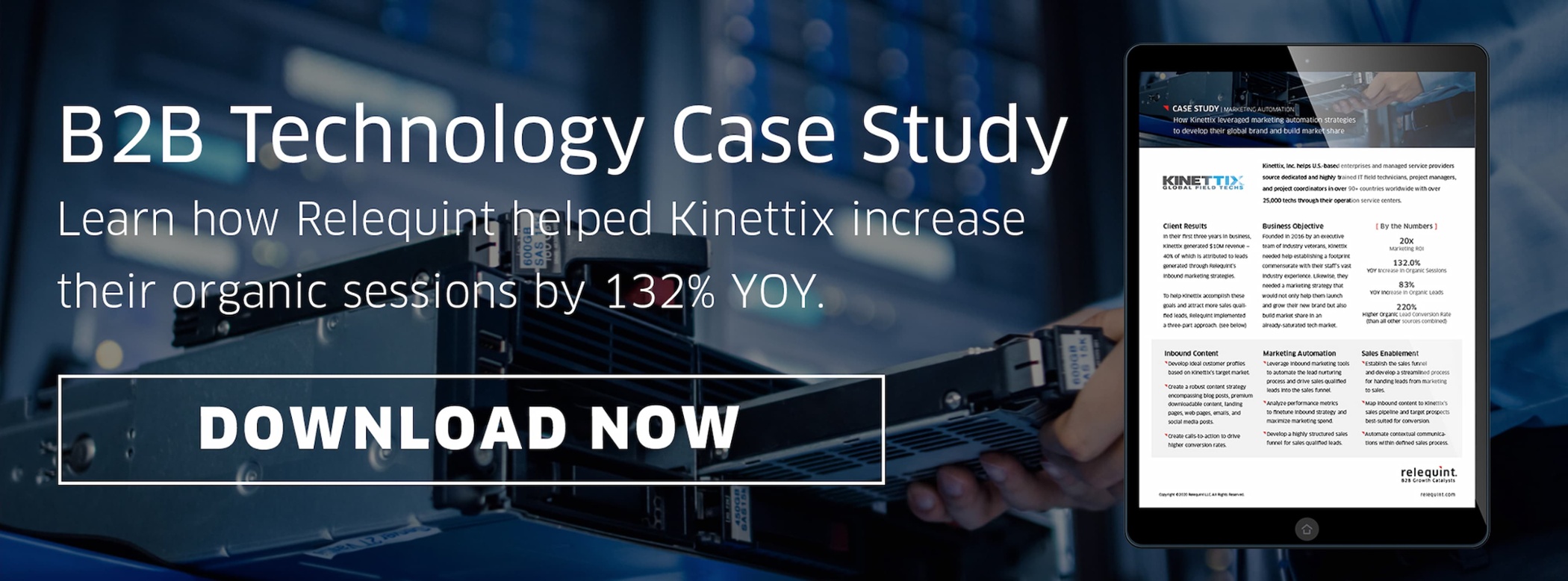You don't believe in one-size-fits-all business solutions for your B2B technology business. Your B2B customers don't either. Yet, in many companies, the sales funnel feels very uniform to buyers. This can lead to irrelevant messaging and lower conversion rates.
Alternatively, a personalized sales funnel optimizes relevance, timing, and even personal preference to meet marketing KPIs throughout the funnel and deliver more sales-qualified leads.
What Is a Personalized Sales Funnel?
A personalized sales funnel is a system that:
- Learns who people really are (Machine Learning)
- Guides them with the most relevant messages (Segmentation, Automation)
- Delivers the perfect offer at the perfect time (Automation)
- Delights with them after the sale (Retention, Increased LTV)
"That sounds good," you may be thinking. But it also seems complicated to customize interactions high in the funnel.
Doesn't that generate inconsistency? Inefficiency? Inability to achieve marketing KPI?
It can, without the right systems and technology in place.
A collaborative study by thebalance.com, sumo.com, and mequoda.com showed that technology companies could increase conversions from 0.1-5% to 26-58% by enabling visitors to customize their experiences from the moment they hit the website.
Let them guide themselves to the right lead magnets. Your B2B customer knows what they need from you better than you do at this stage in the funnel.
And the truth is, as more businesses, especially those in the naturally tech-heavy B2B technology space, customers expect this more personalized experience.
Personalizing the experience is worth it.
Reasons You Need a Personalized Sales Funnel
Personalization can help you:
- Refine your selling process through machine learning.
- Craft messages that are more relevant to your prospects. Be the perfect fit for them.
- Build a stronger relationship mid-funnel.
- Leverage that relationship later to upsell and generate a delighted customer.
- Get rid of the need for pushy sales tactics that your customers openly detest and your salespeople secretly hate.
- Avoid reputation damage from hard selling.
- Meet each marketing KPI reliably.
- Increase positive reviews, referrals, and brand loyalty for your B2B technology company.
Why isn't everyone using a personalized sales funnel? Until fairly recently, this wasn't cost effective. Also, machine learning was still in its maturity and wasn't ready to transform the user experience.
Now, the technology has come a long way and is more accessible to B2B technology companies who are ready to invest in it.
How to Create a Personalized Sales Funnel
Let's look at the sales funnel from a prospect’s point of view.
Analyze Online Activities
A visitor to your website clicks something to move to your site from social media, etc., or through your site.
They're more likely to click if this clickable element speaks to them through its:
- Content (the image or written message)
- Form (is it a button, link, banner)
- Location (above the fold, below the fold, left, right)
- Style (color, size, white space, alignment, font, text size, dynamic or stationary)
The visitor is most likely to click when these elements align with this person's preferences. So they may vary from funnel to funnel.
Landing pages must also align with the content and style of the page above. And you need to know where the person came from (the source) to determine how people get to your site and better understand their motivations.
What does this visitor need to see to click to your website?
So far, this mostly sounds like a digital sales funnel. Here's where personalization comes in.
Identify Segmented Behavior
Track demographic and other data to begin understanding common characteristics of individuals who click and respond to your landing page to your website.
An example: men 35-45, who come from Facebook respond to data-driven content and case studies. They like 7-day free trials vs. 30-day. Maybe they're too busy for 30-day trials or think it suggests that the software is hard to learn. You can learn their motivations as you go.
Personalize Content Using Machine Learning & Automation
This happens in two parts.
First, you create content, tag it, standardize it, and deliver it to your content management system for publishing on your site.
Next, based on what you learned about different segments of buyers, you create elements for the top of the funnel and the aligned landing page that match each of those segment's preferences.
Using machine learning and automation, you can deliver the right content to the right person.
But here, we're only talking about segmentation, not personalization, which is on an individual level, right? Machine learning is always learning. So it may start with what seems like basic segmentation and refine itself over time as it learns the nuances within segments.
Over time, your content becomes more relevant, and you can re-define your marketing KPI year to year as performance improves over time.![]()







 By
By 
